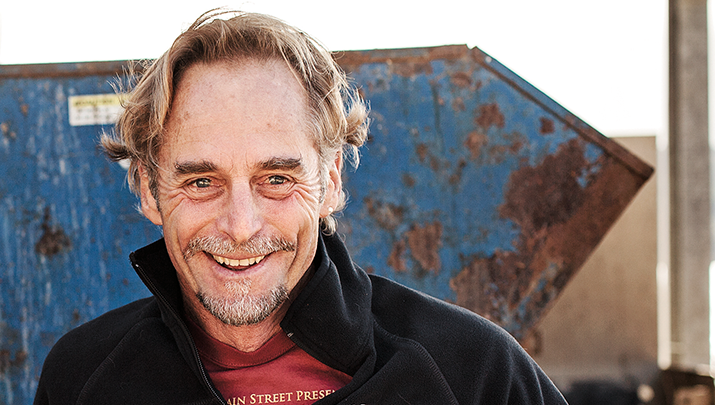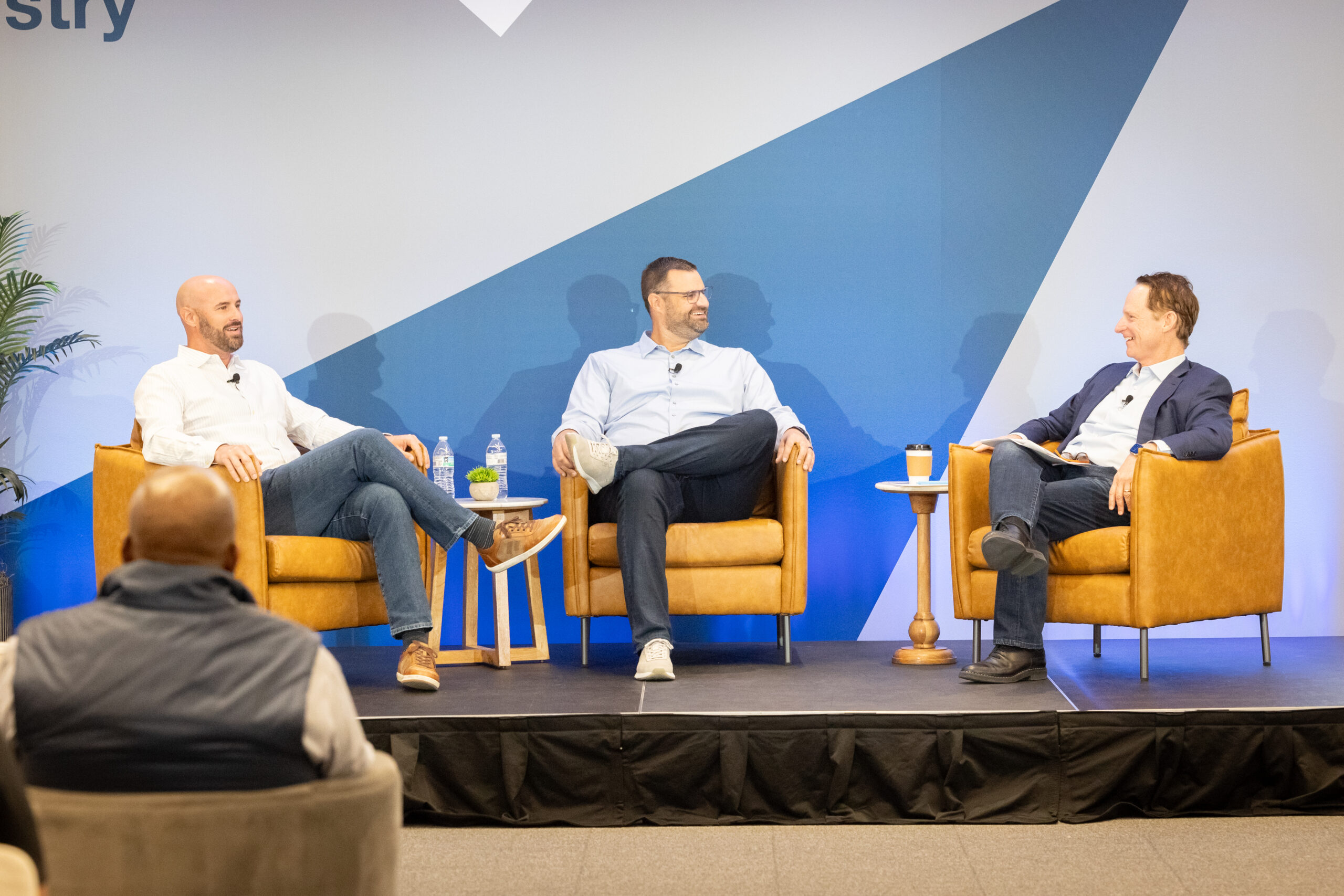

Sustainable Innovations in Oysters
- John Finger
- Hog Island Oyster Co.
Thirty-five years ago, I was a restless marine biologist stuck working in restaurants to pay my rent. A fresh East Coast transplant in the Bay Area, I found myself spending a lot of time thinking about how diners could buy only raw East Coast oysters. Even though I was broke, I set out to achieve something previously unimaginable on the West Coast: sustainable raw oyster farming.
On the West Coast, oysters were naturally grown in clumps; by the time they were strong enough to break off, they were too big for raw consumption and generally used in stews or barbecues. I wanted to experiment with what oyster farmers were doing in Europe: the “single seed” method. This involves scattering the oyster larvae on powdered shell chips so they grow farther apart from one another.
The problem was, back in 1983, my partner, Terry Sawyer, and I didn’t have a lot of money to spend. We cobbled together some funds from our various odd jobs and managed to lease five acres of shellfish land in Tomales Bay, just north of San Francisco, and buy a handful of oyster seed.
We quickly discovered that the single-seed method allowed us to manipulate the oysters’ growth, making them smaller for half-shell consumption. We were among the first on the West Coast to implement this process for Pacific oysters.
With this first batch of Hog Island oysters — named after a nearby island — we quickly realized it was an uphill battle in the marketplace because people were suspicious of raw Pacific oysters. We spent months knocking on restaurant and wholesalers’ doors with samples, finally getting our break with an old friend at Marinelli Shellfish, a marketing and distribution company. Marinelli sold our oysters to Zuni Café and Chez Panisse, two local restaurants that were among the first to promote locally grown foods.
Yet in those early years, we could only harvest in winter because the shelf life of oysters isn’t very long in the warmer months. This meant we had no cash flow for many months out of the year — and we were struggling to get the business off the ground. In 1987, we took on a third-party investor to allow us to further innovate. We added chilled, filtered seawater tanks where we could store harvested live oysters year-round.
That was a game changer for us. We had recently set up a traveling oyster bar that catered events all over the Bay Area, and now it was open for business all year. And to further help with cash flow, we opened the gates at our bay location off scenic Highway 1 to people who wanted to stop in for an oyster.
We added picnic tables and then barbecue stations — and soon we lucked out with some great free marketing. Magazines like Sunset were writing about us, and suddenly we went from 100 percent wholesale, seasonal sales and waiting to get paid to having a booming year-round business.
But all through this exciting time, my partner and I were quietly fighting for our company’s life. Unfortunately, we had allowed an investor to own half of Hog Island Oyster Co., and by 1994, we were at loggerheads with this man, who would not agree to anything — and who was taking half our profits. We started the process of dissolving the company. It was a very dark period of time because we thought we were going to have to throw away all our innovation and efforts. I even did some carpentry work on the side, getting ready to figure out a new career. Through many rounds of grueling mediation, rather miraculously, we bought him out for $50,000 in 1995. We then brought in a group of like-minded investors — friends and family, people who believed in what we were doing — to restart the business.
That’s when our Evergreen company was truly hatched and our next wave of Pragmatic Innovation began. We wanted to be vertical — in part to never be dependent on anyone again — and set our sights on selling our oysters in our own restaurants. It took a couple years to gain back what we lost through the investor debacle, but in 2003, we opened our first restaurant in the SF Ferry Building. We doubled our revenues and employees in one year.
We loved the farm-to-table idea — we call it “bay to bar” — so we have decided to focus on this rather than wholesale. We have three restaurants in the Bay Area and recently purchased a fourth; we are very careful about our growth and have passed on many offers over the years.
We’ve just recently found a facility in Humboldt Bay where we can have an oyster hatchery and a nursery. This way, we are now producing our own seed, which we can grow to create oysters that we sell in our own restaurants. We think chain of custody is very important with this food. We only sell directly to restaurants — we want to know they are doing a good job, so we check it out. We have about 25 accounts in the Bay Area now. From October to May we ship nationally to just a few accounts. We do just a bit of wholesale these days to keep our name in the marketplace — and we handpick to whom we sell.
Another idea we’ve had recently is to create salt flats. We bought a 250-acre farm across the highway from us in Tomales Bay. We’d like to expand our wet storage tanks, but we can’t just release salt water onto that land. However, we might be able to harvest the sea salt in some way. There are a lot of cheese farms nearby that buy sea salt, so we think this might be a great symbiotic relationship.
Today we have 160 acres in the bay, and we harvest and sell over 3.5 million oysters, Manila clams and mussels every year. Our innovation strategies have shifted to joyful experimentation now that we have enough money to spend on our dreams. But every idea we act upon is always grounded in the reality and wisdom that comes from years of fighting to survive.
After all, Terry and I both have family who work here, including our sons. The exit strategy is simple: Never sell. All I want is sustainable growth and to set up the company for another 35 years of success.
John Finger is the co-founder and CEO of Hog Island Oyster Co.
More Articles and Videos

Fireside Chat with Dave Thrasher, Dan Thrasher, and Dave Whorton
- Dave Thrasher, Dan Thrasher, & Dave Whorton
- Supportworks and Thrasher Group

Get Evergreen insight and wisdom delivered to your inbox every week
By signing up, you understand and agree that we will store, process and manage your personal information according to our Privacy Policy






